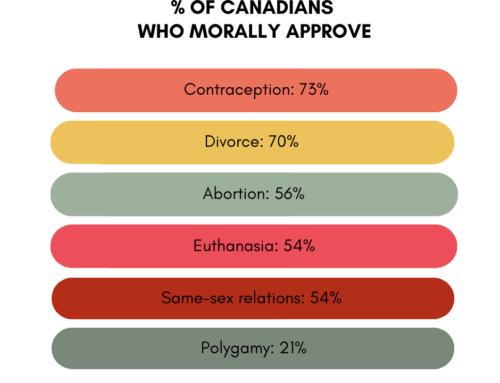
Interim writer, Rick McGinnis, Amusements
By Rick McGinnis
The recent Netflix adaptation of J.D. Vance’s 2016 memoir Hillbilly Elegy begins with a flashback – a vignette of working-class life that resonated with me, perhaps more than with most viewers. We begin with a montage where the camera glances over scenes of life in ramshackle rural Kentucky, the “hill country” where Vance – actor Gabriel Basso, in a voiceover – says he feels “most at home.” He grew up in rust belt Ohio, but spent every summer there, “hands down the best part of my childhood…it’s where my people come from.”
What follows would not bathe my childhood memories in an amber glow. Cycling to the local swimming hole before his family is supposed to start the drive back to Ohio, he comes across a turtle with a bloody scar across its shell. He tenderly picks it up and carries it to the water, obviously intending to find it a quiet refuge. On the way he runs into another shirtless boy lounging on an ATV, who suggests they tear the shell off, or see how far they can throw it. Young Vance, obviously a more sensitive soul, refuses, saying significantly that “they can heal.”
Floating in the sun-dappled water beneath the trees, he’s ambushed by a group of older boys who force him under – “Go back to Ohio, boy!” – and crudely insult his mother. Young Vance is losing the subsequent fight when his older male relatives pull up in a pickup truck and minister rough justice on the boy’s tormentors. “Your people will always have your back,” Vance explains, to viewers who might not be familiar with the ways of his people.
If this is the best part of J.D. Vance’s childhood, the worst parts must be pretty terrible, right?
If you actually do have personal experience with a working-class childhood, this sort of bullying and casual cruelty won’t be much of a shock. It does go some ways to explaining why J.D.’s mom – played by Amy Adams – is so eager to get away from the hill country and her people and back to Ohio. You imagine that, as a woman, her memories of childhood summers in Kentucky might be even worse than the ones that her son somehow recalls so fondly.
When his book was published, Vance became an explainer for people who didn’t come from the economically challenged, largely white, working-class communities in Appalachia and rust belt cities like Middletown, Ohio. The shock election of Donald Trump had upset his opponents in the media and the electorate enough that they needed answers that might – perhaps, if only for a moment – explain this hidden demographic of voters and not just dismiss them as backward, racist reactionaries: the “deplorables” that Hillary Clinton so efficiently alienated in just one smug election speech.
Now, four years later and after the apparent failure of Trump to win a second term (amid controversies about ballot box irregularities that will resonate for at least another four years, even if Trump finally concedes) Vance and Hillbilly Elegy are back in front of the public with a Netflix adaptation, made by journeyman director Ron Howard and featuring obvious Oscar-bait performances by Adams and Glenn Close.
This time, though, Vance and his bootstrapping story of overcoming long odds isn’t getting the same eager reception from the media. Initial critical reception was harsh, from all across the political spectrum. The headline of David Sims’ review in The Atlantic called it “One of the Worst Movies of the Year – “even less authentic than many of the think pieces that followed the release of Vance’s book in 2016.” Scott Mendelson of Forbes called it “Pandering Poverty Porn” – “…a film that can disappoint liberals and conservatives equally.”
The reliably unconventional Armond White in National Review criticized it for sins of omission, mostly: “The film’s secular class message relies on slotting the white underclass while pitying the opioid crisis, for topical relevance (adding the decadent allure of Breaking Bad and The Paper Chase to Millennial elitism).” Unfamiliar with most of the issues besetting working- and underclass populations, the film picks and chooses almost randomly from the material offered up in Vance’s source material, landing on themes like the sacrifices made by matriarchs like Glenn Close’s Mamaw to help youngsters like Vance.
“Yet the film seems uncurious about the fate that befalls working-class men who go from deplorable to chumps and are then dismissed,” Armond writes. Like the ATV kid and the bullies from the first scene, and all the men seen in and around the pickup trucks at the Vance homestead. They get to play out the worst behaviours, and the most primitive responses, but their subsequent lives don’t get much consideration, probably because they, unlike Vance, don’t transcend their roots and end up studying law at Yale.
Like Vance, I was troubled and tormented by similar boys and men growing up, and like Amy Adams’ character, I couldn’t try to escape from my roots fast enough. Indeed, Adams’ Bev is probably the weakest – and definitely the loudest – link in the story. A bright woman, salutatorian in her high school graduating class (as she makes sure everyone knows), she still fell victim to bad choices (mostly in men) and the flood of opioid drugs into suburbs and rural communities over the last two decades. Her mistakes and flaws contribute directly to the misfortunes that her son has to overcome – mistakes that Vance the author saw generally plaguing his people as they fell very much behind in the pursuit of the American Dream.
But we aren’t given much of a chance to understand what prompted Bev’s bad choices, pivotal as they were. And obvious intelligence married to poor impulse control isn’t a personality profile limited to just white, working-class women with Appalachian roots.
The obvious fact is that women like Bev aren’t born with the same safety net afforded by someone with the resources of a middle- or upper-class family. J.D. manages to barely land in the only one available to him – his ailing grandmother, Mamaw, who was unable to offer the same one to her daughters, thanks to her own youthful bad choices and subsequently chaotic family life. That fortuitous opportunity is the dramatic turning point of Howard’s film, but it happens almost magically, since the film has neither the time nor inclination to piece together all of the social, cultural, and economic factors that makes such a thing happen – or not. I was only able to see it thanks to my own upbringing, and the sort of interpretation and explanation that I never needed a Hillbilly Elegy to help me understand.
But how to explain the disparity between negative criticism of the film (just 26 per cent positive on Rotten Tomatoes) and viewer opinions (86 per cent positive)? Scott Mendelson of Forbes admits that, “in a vacuum,” the film would be appreciated as “well acted, handsomely staged” and offering “passive entertainment.” But this is an intensely politicized moment, and the film’s unwillingness to explore the larger racial context of poverty, or point fingers at specific policy and politicians that could create these problems is at the heart of much of this criticism.
And so Hillbilly Elegy has become another opportunity to make a political point with a story about class – an opportunity too ripe to overlook, really. In a story in City Journal, Charles F. McElwee explained his own connection to Vance’s memoir with an anecdote about revisiting the declining Pennsylvania community where his own largely Catholic, mostly Irish roots reside. He recalls the annual “Irish Festival” the town of Heckscherville would host, to honour the founding of St. Keiran’s, the local parish founded in 1858 by St. John Neumann, its local bishop.
He remembers the descendants of coal miners who “celebrated their heritage, raised money for the local fire company, ate ethnic food, drank Yuengling beer, and sat in lawn chairs as ‘The Irish Lads’ played ballads.” The church closed in 2008, and is now abandoned and vandalized, the local mining industry almost extinct. The country went for Trump by nearly 70 per cent, both in 2016 and this November.
Four years ago there was a hunger to understand why people, at least from the particular perspective of a journalist or academic, would (supposedly) vote against their interests, and so Vance and his book became armchair tour guides to communities like Middletown and Heckscherville. This year, voting for Trump again – and expressing skepticism of the polls that certified his loss – isn’t looked upon as charitably, and so the reception for Hillbilly Elegy, the film, isn’t as charitable. “Panning the film,” says McElwee, “has become its own form of group think to express resentment of Trump voters.”
I have my own problems with the film, stemming mainly from Vance himself, as narrator and source material, and since the author was an executive producer on the adaptation, I have to assume that he approved of whatever excisions and simplifications were made in the move from page to screen. I would, of course, love to see someone comprehensively and sensitively tell the story of poor whites in the social climate of America in the first decades of the 21st century.
But even if someone could see such a thing come into being and onto our screens, I’m not sure our wholehearted and lockdown-enhanced embrace of polarized politics and virtual social combat would allow whatever insights told by such a story to land on fertile ground. It’s simply too politically useful to set us all against each other and try to ride these volatile emotions to some sort of short-term political victory. At this point, it isn’t just hillbillies we’re eulogizing.




